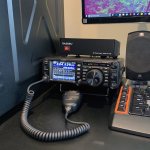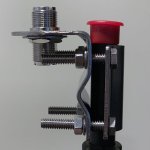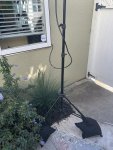I'm a technician class license holder and still a n00b, so far my only experience has been HT's. Eventually, I want to go General and get a larger base station HF capable unit however at this time space and $ do not make this an option for me. I'm considering getting a mobile unit (Yaesu FTM 400XDR) and setting it up at home for more power and the flexibility to possibly mount it in my vehicle later as well as taking it mobile with a battery set up and telescoping antenna mast (already have one I use with my HT).
My question is what kind of hardware will I need that does not come with the unit? I understand I'll need some kind of wiring harness/ AC to DC adapter and stand or mount to keep it neat on my desk. I like the idea of mounting the unit under my desk and having only the head unit and mic visible. I'm undecided on antenna thus far as I can't really install anything permanent at my apartment but I have a roll up jpole I use on my HT (limited to 30 watts). I've also heard good things about the glass mount Larsen Dual Band which can handle up to 100 watts.
I will be using both VHF/UHF analog and C4FM.
Final question, am I at risk of damaging computers other small electronics if they are fairly close to the antenna in this power range (50W max)? What kind of minimum clearance should I have from the antenna?
Any and all feedback is appreciated. Thanks!
My question is what kind of hardware will I need that does not come with the unit? I understand I'll need some kind of wiring harness/ AC to DC adapter and stand or mount to keep it neat on my desk. I like the idea of mounting the unit under my desk and having only the head unit and mic visible. I'm undecided on antenna thus far as I can't really install anything permanent at my apartment but I have a roll up jpole I use on my HT (limited to 30 watts). I've also heard good things about the glass mount Larsen Dual Band which can handle up to 100 watts.
I will be using both VHF/UHF analog and C4FM.
Final question, am I at risk of damaging computers other small electronics if they are fairly close to the antenna in this power range (50W max)? What kind of minimum clearance should I have from the antenna?
Any and all feedback is appreciated. Thanks!





